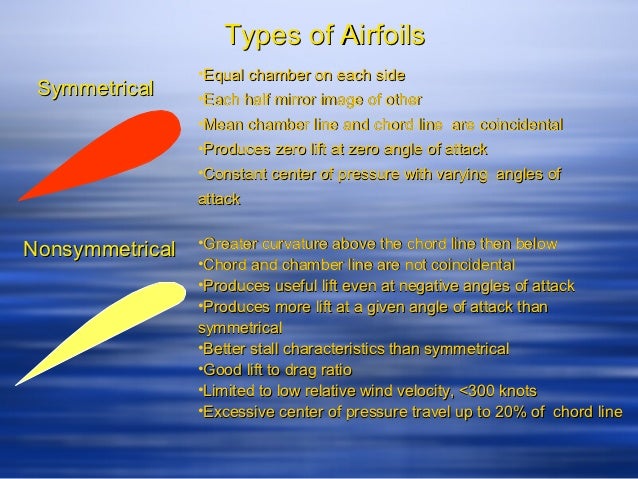

It is a distance between the leading and trailing edges measured along the chord line.Ĭhord Line: Chord line is the straight line connecting the leading and trailing edges. The terms which are related to aerofoils are as follows.Ĭhord: Chord can be defined as the distance between the leading edge, at the front of the aerofoil that is the point, and has maximum curvature and the trailing edge, at the rear of the aerofoil, that is the point with a maximum curvature along the chord line. An aerofoil can have many cross-sectional shapes. An Aerofoil is being designed with a shape that has the capability of producing lift with relatively high efficiency as it passes through the air.

To differentiate between different aerofoil shapes, an aerofoil’s properties are defined and specific terminologies are used.

Different types of aerofoils are used for the construction of aircraft wings. These are dependent on certain terms that need to be defined to understand the design.Īn aerofoil consists of various cross-sectional shapes. The design of the aerofoil depends on the weight, speed, and purpose of the aircraft and mainly depends on the aerodynamic characteristics. A body that is airfoil-shaped, moving through a fluid produces an aerodynamic force. A similar idea is being used in the designing of hydrofoils which is used when water is used as the working fluid. Lift is the component such that the force is perpendicular to the direction of motion and drag is the component parallel to the direction of motion. Aerofoil is the cross-section design of the wing, blade, or sail. Lift is the component that helps the force turn out to be perpendicular to the motion’s direction while drag is the component that is parallel to the motion’s direction.Īerofoil or also known as Airfoil is a structure with curved surfaces designed to give the most favourable ratio of lift to drag in flight, which is mainly used as the basic form of the fins, wings, and tailplanes of most aircraft. High-speed aircraft mainly implement low-drag, low-lift airfoils that are thin and streamlined and on the other hand, slow aircraft that carry heavy loads use thicker airfoils with high drag and high lift.Īerofoil refers to a cross-sectional shape having a design with a curved surface that provides the most favourable ratio between lift and drag in flight. An aerofoil generates a lifting force that acts at right angles to the airstream and a dragging force that acts in the same direction as the airstream. It is a surface shaped like an airplane wing, tail, or propeller blade, that produces lift and drag when moved through the air. $$\begin\).Aerofoil is also called an airfoil. Circulation is a scalar quantity, obtained through the integration, which is a macroscopic measure of rotation over a finite region in the fluid flow, whereas vorticity is a vector field which provides a microscopic measure of the rotation at any point in the fluid.Ĭirculation is defined as the line integral of the tangential velocity component around a closed curve fixed in the flow field. The circulation and vorticity are the two primary measures of rotation in a fluid. This hypothesis, better known as thin airfoil theory, was first conceived by Max Munk which was later refined by the team led by Hermann Glauert in 1920s. The vortex distribution along the wing will simulate the actual properties of the wing and allow to have a simple approach of calculating the properties of the wing. A vortex superimposed on the airstream simulates the process of lift generation by the wing section. To deal with finding the flight properties of wing sections, a more ameliorated way is to consider an inviscid and incompressible flow past the wing surface. The cross-sectional geometry of the wing influences the flow of air and the combined geometry of the wing and the reaction of the air causes any general solution of the wing-sectional properties to become too complicated, making it impossible to utilize or almost difficult to ascertain. An aircraft moves in the air by overcoming the gravity with a lifting force, which is essentially provided by the aircraft’s wing.


 0 kommentar(er)
0 kommentar(er)
